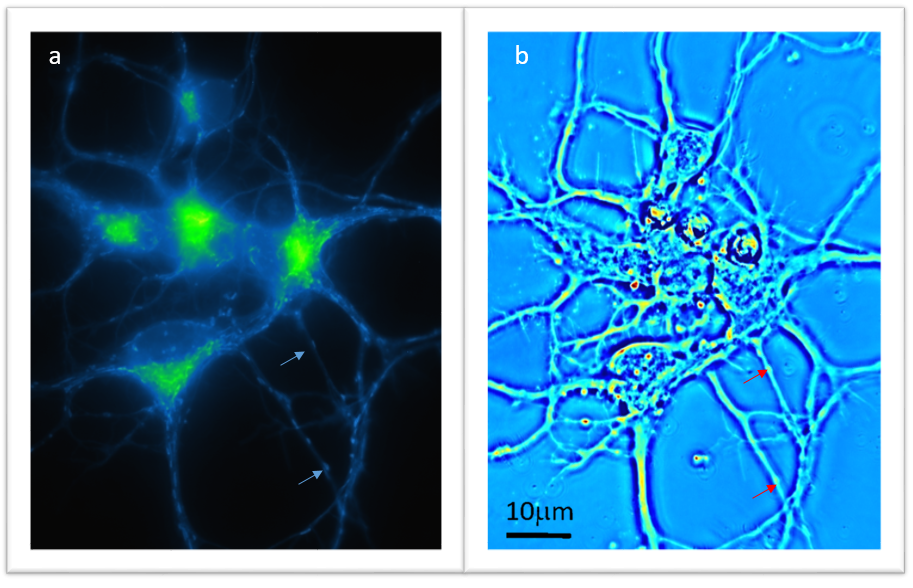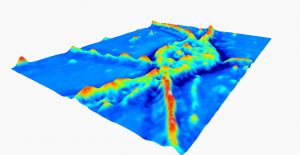
Jorge Maldonado De-Jesus, Trainee
Discoveries relevant to our brains, which influence and control such a wide range of actions, emotions, and thoughts, have relied on two complimentary approaches: cognitive and behavior studies and brain cell and tissue biology studies. Our research traineeship program utilizing miniature brain machinery, funded by the National Science Foundation (NSF), combines these two paradigms to train the next generation of Science, Technology, Engineering and Mathematics (STEM) workforce to advance discovery. Our students are recruited from neuroscience, cell and developmental biology, molecular and integrative physiology, chemistry, chemical and biomolecular engineering, bioengineering, electrical and computer engineering, and psychology to foster a culture of innovation and translational research, and will significantly impact efforts to understand and control brain activities ongoing at other institutions.
The ability to rationally engineer, and then decipher and harness the living 3D brain represents the next frontier for studying brain development and function. We would be able to gain the ability by converging two complementary but separated brain research paradigms: (i) top-down, cognitive and behavior studies and (ii) bottom-up, brain cell and tissue studies. We propose that these paradigms are poised to converge, because both aim to rationally understand and regulate brain activities. However, there is a lack of human resources, in particular research personnel who can realize this convergence. To this end, this program aims to produce the next generation of STEM workforce who will be able to develop advanced tools that can unite these two disciplines in brain studies and serve to better understand and control brain activities.
Intellectual Merit
Regarding the educational merit, our goal is to implement, evaluate, and disseminate a highly effective, interdisciplinary training program that renovates traditional models of graduate education in neuroscience and neuroengineering. This goal will be accomplished by: (a) creating integrated educational and research environments that provide NRT trainees with multidisciplinary experiences in the fabrication and analysis of engineered brain and peripheral tissues; (b) infusing critical thinking, leadership, communication, team building, ethics training, and outreach in innovative ways; (c) effectively deploying strategies to recruit and retain a diverse set of NRT fellows; (d) establishing a student leadership council that plays an integral role in the NRT; (e) embedding the assessment of the added value of the NRT experience; and (g) sustaining the impact of the NRT by permeating its educational system to other programs at University of Illinois at Urbana-Champaign (UIUC).
 Regarding the intellectual merit, our goal is to foster cultural change in the current educational environment of brain science by bridging the separate disciplines in the study of structure, physiology, and function of the brain. We will achieve this goal with four research themes, each of which aims to create and evaluate: (a) a “sensory brain-bot” with the sensing ability, (b) a “locomotive brain-bot” with the ability to control actuation and movement, (c) an “integrative sensory and locomotive brain bot” with information processing and decision-making capability; and (d) a “vascularized brain organoid” with enhanced scalability and sustainability. Each challenge requires multifactorial solutions, bridging scales from individual cells to the complex interactions between communities of cells and their environment. Recent advances in cell analysis and engineering, regenerative biology, biofabrication, bioimaging, and biomechanics will provide the catalyst for this revolutionary training program. Integration of these intellectual domains with the educational program would produce a new generation of scientists and engineers who can tackle major problems in brain studies and improve the quality of human life.
Regarding the intellectual merit, our goal is to foster cultural change in the current educational environment of brain science by bridging the separate disciplines in the study of structure, physiology, and function of the brain. We will achieve this goal with four research themes, each of which aims to create and evaluate: (a) a “sensory brain-bot” with the sensing ability, (b) a “locomotive brain-bot” with the ability to control actuation and movement, (c) an “integrative sensory and locomotive brain bot” with information processing and decision-making capability; and (d) a “vascularized brain organoid” with enhanced scalability and sustainability. Each challenge requires multifactorial solutions, bridging scales from individual cells to the complex interactions between communities of cells and their environment. Recent advances in cell analysis and engineering, regenerative biology, biofabrication, bioimaging, and biomechanics will provide the catalyst for this revolutionary training program. Integration of these intellectual domains with the educational program would produce a new generation of scientists and engineers who can tackle major problems in brain studies and improve the quality of human life.
Broader Impacts
The proposed program represents a highly coordinated and interdisciplinary effort to educate scientists and engineers in solving important problems in health, economics, and sustainability. Taking advantage of our team’s broad expertise in engineering and the analysis of brain and peripheral tissues across length scales, this first-of-its-kind educational program is expected to significantly impact efforts to better understand, sustain, and restore brain activities. Our educational training component will include efforts to recruit women and under-represented NRT fellows and to promote international collaboration through trainees’ visiting programs. Another important component of this program would be the dissemination of our research activities to non-scientific communities through currently existing and new outreach programs. These activities would further provide an empirically validated model for other programs in this area.

